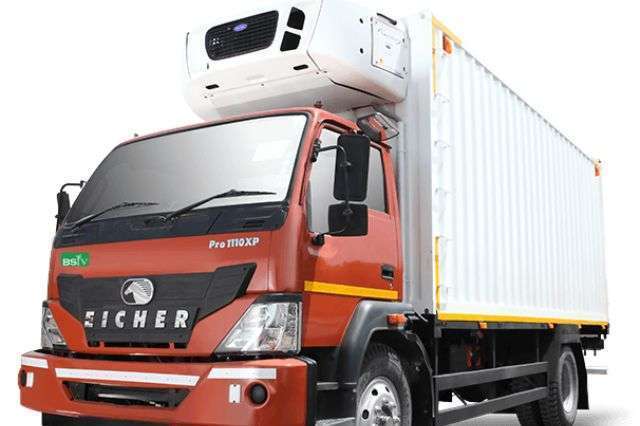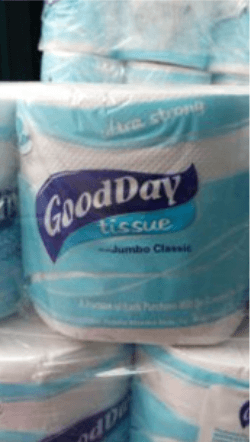Transporting Temperature-Sensitive Items: Solutions for Maintaining Proper Conditions
Transporting items that require temperature control can be challenging. Proper handling and storage is crucial for maintaining product integrity and safety. This article will discuss key considerations and best practices for transporting temperature-sensitive items such as pharmaceuticals, vaccines, tissue samples, and food.
Choosing the Right Packaging
Proper packaging is the first line of defense for temperature-sensitive shipments. Packaging should be validated to ensure it provides adequate thermal protection and insulation. There are several common types of packaging used for temperature-controlled transport:
Insulated containers are designed for single or repeated use and are made of polyurethane foam or vacuum-insulated panels. These containers often include coolant packs to help maintain desired temperatures. The insulating properties keep internal temperatures stable. Refrigerant packaging uses phase-change materials that absorb heat as they melt. This style is often used for shorter-duration shipments of around 48-72 hours. The phase change materials provide cooling during transit.
Insulated pallet shippers allow transport of larger, pallet-sized loads. They may use polyurethane foam inserts or proprietary composite materials that provide excellent insulation. These provide stability for bigger loads like pallets of refrigerated food products. The packaging configuration should align with shipment duration, environmental temperatures expected during transit, and the allowable temperature range of the product. Shock and vibration protection is also an important consideration to prevent damage.
Maintaining the Cold Chain
The cold chain refers to the constant temperature control required for perishable items like frozen foods, biologics, and chemicals. Proper cold chain management prevents disruptions that could render products unusable or unsafe. There are several key elements required for maintaining the cold chain:
Data loggers are compact electronic devices that record time and temperature data. They are included in the packaging to monitor conditions and help verify cold chain compliance. Temperature data provides proof proper temperatures were maintained.
Refrigerants such as gel packs, dry ice, or liquid nitrogen can supplement insulation and maintain low temperatures. Having active cooling sources helps regulate internal conditions.
Carriers should be qualified and experienced in handling temperature-sensitive cargo. They should offer refrigerated trailers, ocean containers, and storage areas to ensure cold chain integrity. Standard operating procedures for handling and loading refrigerated items is important.
Redundancy in the form of layered packaging and multiple data loggers or coolant packs provides an extra layer of protection. If one cooling element fails, there are backups in place to prevent excursions.
The cold chain must be maintained through all transportation legs and storage points between the origin and final destination. Diligence is required across each handoff to avoid breaks in the cold chain.
Medical Supplies and Kits
Transporting medical supplies like vaccines, medications, tissue samples, and devices requires care to maintain product efficacy and safety. Typical medical transport kits include:
Insulated boxes specifically designed for medical shipments, validated to maintain temperatures within a few degrees of setpoint for 48+ hours. Interior compartments organize payloads.
Multiple gel packs that can be frozen or refrigerated provide active cooling. Phase change materials like foam bricks add thermal mass.
Redundant data loggers and temperature displays enable real-time monitoring and post-transit data review.
Cushioning like foam or air packs prevents damage from shocks and vibration. Absorbent pads safeguard against leaks.
Some kits contain accessories like refrigerant, tape, zip ties, and forms to facilitate packing, shipping, and compliance.
Kits are recyclable or reusable. After use, refrigerants and coolants can be reconditioned per enclosed instructions.
Medical supplies couriers are experts at properly packing and handling these standardized kits to ensure medications, vaccines, specimens and devices ship safely. Supply-chain controls protect sensitive payloads.
Controlling Ambient Temperatures
Some biologics, vaccines, chemicals, and ingredients require tightly controlled ambient temperatures around 15°C to 25°C (59°F to 77°F). This presents different challenges compared to freezing products. Solutions for maintaining ambient temperature control include:
Phase change materials can be selected with melting points that align with the target temperature range needed. As product temperature rises, the PCM absorbs heat to cool it back down. When it falls, PCM releases heat to warm back up. This keeps conditions stabilized.
Insulated containers provide an ambient temperature environment unaffected by external temperatures. The insulated walls isolate the interior from outside conditions.
Heating and cooling elements can be used to regulate temperatures as needed to maintain the desired range actively. This requires power but provides precise control.
Temperature monitoring through data loggers verifies the ambient temperature is controlled within specifications throughout transit.
The packaging configuration and transportation plan should account for seasonal weather changes in the region traversed. Carriers should be able to provide temperature-controlled trailers, ocean containers, and air freight equipment to align with ambient range requirements.
Avoiding Temperature Excursions
Temperature excursions refer to out-of-range deviations from the required temperature specs. They can quickly damage sensitive products. Solutions for avoiding excursions include:
Packaging validation involves testing packaging configurations in real-world environmental scenarios. Doing so helps identify potential failure points and areas for improvement. Data guides design enhancements.
Establishing dwell time limits provides guidance on how long a product can safely remain outside of controlled conditions. This sets operational handling expectations.
Data logger management provides real-time visibility to temperature variations and maps dwell times. The data facilitates identifying process gaps that may be causing issues.
Building in redundancy via backup systems helps prevent minor glitches from cascading into major excursions. Contingency plans also enable quick action if primary methods fail.
Personnel training through clear SOPs and instruction prevents mishandling incidents. It also emphasizes why temperature control is critical and motivates diligent handling.
With diligent cold chain control protocols and robust protective packaging, excursions can be minimized or prevented entirely. But it requires proactive mitigation testing and controls.
Qualification and Validation Processes
Transporting temperature-sensitive biologics, pharmaceuticals, and medical devices requires regulated, procedural rigor. Key validation and qualification processes include:
Design, installation and operational qualification (DQ, IQ, OQ) verifies equipment and systems meet specifications. This confirms the packaging, containers, and cooling elements align with their intended use.
Thermal mapping involves temperature distribution testing. It identifies hot and cold spots in shipping containers. This enables optimization of component placement to improve stability.
Shock and vibration testing simulates transit hazards like drops, shocks, and vibration. It verifies the packaging provides robust protection that prevents damage.
Gap analysis compares the required storage conditions to the actual temperature range delivered. It determines if gaps exist between specs and real-world performance.
Repeated thermal cycling simulates worst-case scenarios of shifting external temperatures. This testing confirms packaging performs consistently over an extended duration.
Standard operating procedures (SOPs) document proper execution of all processes impacting the product. This includes handling, loading, transportation, and verification.
Formal validation provides documented proof that the packaging design and logistics operations meet requirements. When done properly, it mitigates product quality risks. Packaging manufacturers and product owners should jointly validate.
Leveraging Technology
New technologies enable greater visibility, control, and data-driven decision making for temperature-sensitive logistics:
Wireless sensors and data loggers are compact, inexpensive devices that can transmit temperature data in real-time via cellular or GPS connections. This provides live tracking and rapid alerts.
Predictive analytics aggregates data from many shipments to model risks of failure points across lanes, packaging types, times of year, etc. Machine learning refines the analysis over time.
Mobile apps and web portals give shippers temperature and location updates via their smartphone or computer dashboard. This facilitates monitoring in-transit.
Smart, active packaging can self-regulate temperature and environment without needing external power. Integrated micro components adjust heating or cooling as needed.
Automated workflow rules can trigger alerts for dwell time limits or temperature deviations being exceeded. Systems can be configured to prompt corrective actions to avoid compromising cargo.
When paired with robust packaging and process controls, technology delivers added safety assurance and intelligence. The data enhances planning and visibility.
Specialized Services for Medical Items
Transporting lifesaving vaccines, pharmaceuticals, and medical devices requires specialized expertise and utmost care. Accredited medical couriers offer:
A temperature-controlled fleet with properly insulated vans outfitted with active refrigeration. This guarantees stable, consistent transit temperatures aligned to product needs.
Redundancy through dual tracking tags and layered packaging ensures fail-safes are in place. If primary cooling fails, backups take over.
Route planning and modeling optimizes delivery times and maps environmental exposures. This helps avoid unnecessary delays from factors like traffic.
Contingency plans enable rapid deployment of alternate carriers or equipment if needed. There is capability to immediately respond to any shipment failures.
Real-time monitoring via telemetry sensors enables constant vigilance of conditions. Any alerts trigger immediate investigation and response to prevent compromising cargo.
Extensive validation provides qualification documentation assuring packaging, handling, and transportation meet the strictest standards. This covers IQ, OQ, PQ and thermal mapping.
For maximum reliability, shippers can entrust their most vital, temperature-sensitive medical items to specialist medical couriers. Their capabilities ensure these lifesaving products reach their destination intact.
Maintaining proper temperature conditions is critical when transporting items like pharmaceuticals, vaccines, chemicals, or food products. With insulated packaging, active cooling, data loggers, and strict process controls, an unbroken cold chain can reliably preserve sensitive cargo. New technologies add additional monitoring, automation, and intelligence to further mitigate risks. For highly regulated medical products, accredited specialty couriers offer robust solutions to keep vital items stable in-transit. With diligence and planning tailored to product needs, proper transportation conditions can be sustained.





